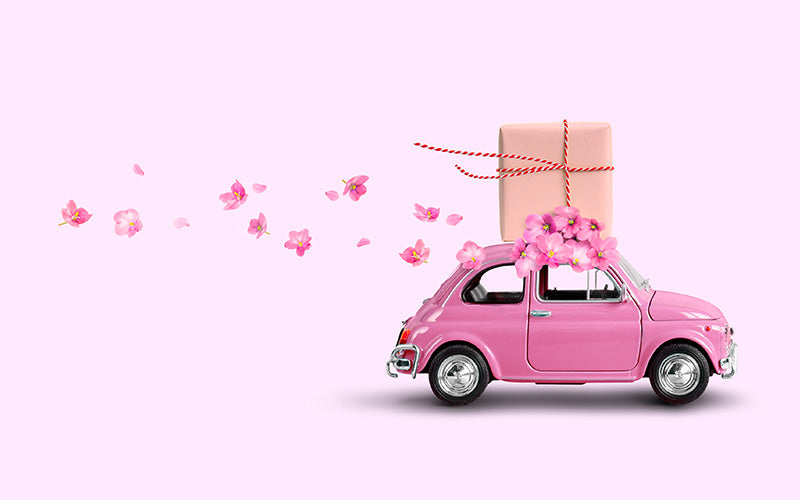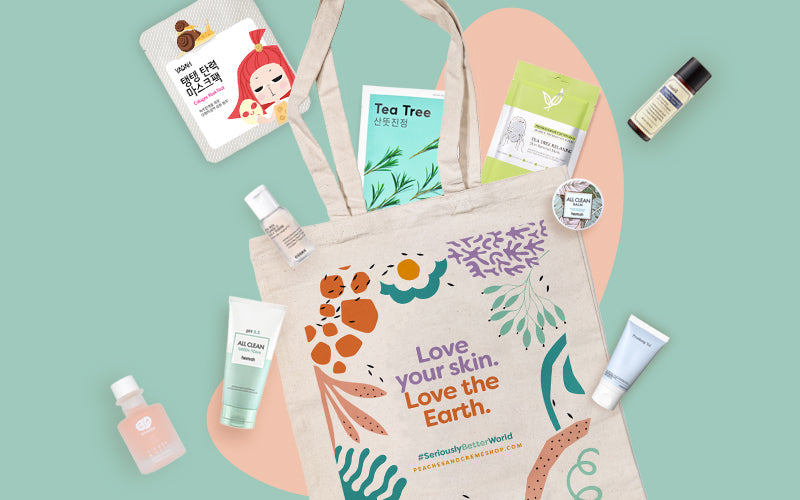ACNE SERIES 4: What is Fungal Acne?

I have these itchy, little bumps on my face that I think are acne. They don’t seem to go away, and even get worse during summer when the weather is humid and hot. Help!
Sound familiar?
Let's discuss what those little bumps are in this blog. You may be surprised to know they are not “acne” even if they look pretty much the same. These bumps are commonly referred to as “fungal acne”. And while that sounds daunting, it is not hard to treat once you actually know what you’re dealing with.
What is Fungal Acne?

Fungal acne or Malassezia Folliculitis (MF) is the result of an overgrowth of yeast, otherwise known as pityrosporum folliculitis (malassezia folliculitis). Malassezia are oil-loving fungi which are naturally found in human skin. However, its overgrowthーoften caused by humidity, hot weather, oily/greasy skinーcan lead to fungal acne.
Despite its name, fungal acne has nothing to do with acne. It is an infection of the tiny hair follicles on the face and body. They usually appear as red bumps (papular acne) that are small, raised, and solidーresembling pimples.
One sign that you have fungal acne and not acne vulgaris (or normal acne) is that they are itchy. If you also have whiteheads or blackheads that are 1 mm big, they could also be fungal acne.
Fungal acne usually appear on the chest, back, or upper arms, but can also occur on the face, just like typical acne can, making it difficult to identify which of the two skin problems you are experiencing.
To make things worse, fungal acne and regular acne can co-exist in the same area at the same time. So how can you differentiate it? We've got you, Peaches.
Fungal Acne vs. Regular Acne
In summary, fungal and regular acne can be differentiated by:
|
|
Acne Vulgaris (Normal Acne) |
Fungal Acne |
|
Cause |
Bacteria |
Overgrowth of fungi (Malassezia) |
|
Size |
1-3 mm papules or pustules |
Bumps are generally smaller and almost same in size |
|
Signs |
|
Itchy, can worsen after sweating or increase in skin temperature |
|
Is it contagious? |
No. |
Might be contagious through bodily contact because fungus spreads. |
|
Where you normally find them |
T-zone, forehead, hairline, back, chest, upper arms where you have the excessive oil secretion |
|
|
Common cause |
Excessive oil production |
|
It is very important to differentiate MF from Acne Vulgaris because regular acne treatments (such as antibiotics, Benzoyl peroxide) can worsen fungal acne.
What should I do if I think I have fungal acne?
- The best way is to consult a dermatologist and request for a fungal acne infection check.
- See how your skin responds to topical treatments.
K-beauty skincare for fungal acne
It's important to use fungal acne-safe products and to keep skincare to a minimum when you have fungal acne. Here's our recommended K-beauty routine when dealing with this skin issue:
1. Use micellar water for your first cleanse.
Double cleansing is still important when you have fungal acne. However, we recommend avoiding oil cleansers while dealing with a flare up. It's better to stick to micellar water for your first cleanse during this time.
Use a water cleanser for your second cleanse but make sure to be quick and avoid letting the cleanser stay on your face for too long to avoid skin irritation.
✨This cleanser contains AHA, BHA, and hyaluronic acid. It is also safe to use on fungal acne!✨
2. Exfoliate regularly.
Excessive oil, dirt, and dead skin cells promote the growth of yeast which can worsen fungal acne. Let's curb this by exfoliating regularly. Just remember: Exfoliating regularly is different from over-exfoliating which is a skincare no-no.
3. Use toners and essences.
Your skin needs light and minimal hydrators during this time. Here are a few skincare products which are all gentle and fungal acne-safe:
Isntree Fresh Green Tea Toner
This toner is perfect for Peaches with oily or combination-oily skin types who are dealing with fungal acne. It is packed with ingredients like Anti Sebum P(HD), green tea extract, and centella asiatica extract to control excess sebum, soothe, and protect your skin.
Etude House Soon Jung pH 5.5 Relief Toner
Light but hydrating, gentle with minimal ingredients. Follow up your exfoliator with this soothing toner. Other options with similar relief and soothing benefits are the SKIN1004 Madagascar Centella Ampoule or I'm From Mugwort Essence.
COSRX Full Fit Propolis Light Ampoule
Propolis is an anti-fungal, healing, and hydrating skincare ingredient. You can use this in the evening if you think your skin needs more hydration.
4. Moisturise with something light.
Moisturise day and night but make sure that your skincare product is light, mild, and fungal acne-safe.
5. Apply sunscreen always.
We've said it before, and we'll say it again: Use👏🏼SPF👏🏼every👏🏼day👏🏼
Sunscreen is a staple because sun damage is your skin's number 1 enemy. With fungal acne, it's simply a matter of choosing a sunscreen that is safe to use and won't exacerbate your current skin issues.
How to treat fungal acne episodes

1. Some dermatologists suggest anti-dandruff shampoos like Head&Shoulders which contain active ingredients called zinc pyrithione 1% or Selenium Sulphide 2.5%, which are antifungal. You can also opt for an anti-dandruff shampoo with Ketoconazole 1% like Nizoral.
After choosing your shampoo brand, follow these steps:
- Apply the shampoo on your damp face like a wash-off mask.
- Leave it on for around 5 minutes.
- Rinse it off. Make sure that no residue is left on your face.
- Use it every night or once every two nights for 2-4 weeks and see the changes it brings into your skin!
2. Get a topical prescription if your fungal acne is stubborn. Some dermatologists will prescribe a cream with 2% ketoconazole to help reduce the yeast in your skin.
3. Sulfur can be effective to fungal and normal acne. There’s a lot of skincare products that come as a sulfur wash or a spot treatment.
Tips for dealing with fungal acne:
- Check if your skincare products are fungal acne safe. Visit the SkinCarisma website or any other online checkers.
- Avoid ingredients in your skincare products that may indirectly “feed” and worsen your fungal acne. These include:
- Oils and Fatty acids (ex. Lauric, Palmitic, stearic, oleic, linoleic acid, etc.)
- Fermented ingredients (ex. Galactomyces)
- Find and use skincare products that have antifungal properties like honey/propolis extracts, green tea extract, and salicylic acid.
- Do not over moisturise your face, especially during hot and humid weather, because these can support fungal acne's growth.
- Cool down your skin as fungal acne thrives in sweat and heat. While summertime and hot weather can’t be avoided (especially when you live in a tropical region), you can use cold skin rollers and avoid going to saunas or sun bathing.
- Good hygiene goes a long way. Don’t let sweat dry on your skin, change your clothes, and make sure to shower after exercising or sweating it out. In addition, use loose clothes with breathable fabrics when you exercise. Sweaty, damp places are the favourites of fungal acne so it's best if we don't give them a place to thrive!
- Exfoliate regularly, and make sure to do it for your face and body.

We understand that having fungal acne can be an uncomfortable and often intimidating experience. However, by identifying the root of your skin problem, you can rest assured that searching for the right treatment and getting back to healthy skin are within your reach.









Leave a comment